Wurkkos HD15R Headlamp Review
The Wurkkos HD15R is an update to an interesting headlamp. It offers two emitters – one white and one deep red! And it uses USB-C charging!
Official Specs and Features
Here’s a link to the Wurkkos HD15R headlamp product page.
Versions
Of the Wurkkos HD15R headlamp, there are a few versions. They differ in body color – black, red, and cyan. Also available as a kit (with 18650) or without 18650. There are many HD15 versions, too, which I won’t cover here. But a white/white emitter combo is available too.
Price
With the cell (which is the package I recommend), the going price right now is $35.99. That’s a 38% off sale, so get going to buy it. Without the cell, you can save $3, at $32.99.
Short Review
The body is red, which is great. But this red emitter – a deep red Luminus SST-20 is absolutely red. The “Deep” part of the red is so accurate. So red. There’s so much redness to the red. Otherwise, the light as a whole is fantastic. I would probably opt for a more throwy white emitter, but I do understand that isn’t really the role this light fits. Build quality is great. The package is great. The price is also great!
Long Review
The Big Table
| Wurkkos HD15R Headlamp | |
|---|---|
| Emitter: | Samsung LH351d and Luminus SST20 (Red) (Both) |
| Price in USD at publication time: | $35.99 |
| Cell: | 1×18650 |
| Turbo Runtime Graph | |
| LVP? | Switch Warning |
| Switch Type: | E-Switch |
| Quiescent Current (mA): | 0.18 |
| On-Board Charging? | Yes |
| Charge Port Type: | USB-C |
| Charge Graph | |
| Power off Charge Port | with cell: all modes without cell (or body): lowest four modes |
| Claimed Lumens (lm) | – |
| Measured Lumens (at 30s) | 736 |
| Candela per Lumen | 3.23 |
| Claimed Throw (m) | 140 |
| Candela (Calculated) in cd (at 30s) | 208lux @ 3.418m = 2430cd |
| Throw (Calculated) (m) | 98.6 (70.4% of claim)^ |
| Claimed CCT | – |
| Measured CCT Range (K) | 1000-2700 Kelvin |
| Item provided for review by: | Wurkkos |
| All my Wurkkos reviews! | |
| Wurkkos HD15R Headlamp | |
|---|---|
| Emitter: | Samsung LH351d (5000K, 90CRI) |
| Price in USD at publication time: | $35.99 |
| Cell: | 1×18650 |
| Turbo Runtime Graph | High Runtime Graph |
| LVP? | Switch Warning |
| Switch Type: | E-Switch |
| Quiescent Current (mA): | 0.18 |
| On-Board Charging? | Yes |
| Charge Port Type: | USB-C |
| Charge Graph | |
| Power off Charge Port | with cell: all modes without cell (or body): lowest four modes |
| Claimed Lumens (lm) | 1000 |
| Measured Lumens (at 30s) | 814 (81.4% of claim)^ |
| Candela per Lumen | 2.4 |
| Claimed Throw (m) | 148 |
| Candela (Calculated) in cd (at 30s) | 151lux @ 3.756m = 2130cd |
| Throw (Calculated) (m) | 92.3 (62.4% of claim)^ |
| Claimed CCT | 5000 |
| Measured CCT Range (K) | 4800-5100 Kelvin |
| Item provided for review by: | Wurkkos |
| All my Wurkkos reviews! | |
| Wurkkos HD15R Headlamp | |
|---|---|
| Emitter: | Luminus SST20 (Red) (DR-B120-V660 ) |
| Price in USD at publication time: | $35.99 |
| Cell: | 1×18650 |
| Turbo Runtime Graph | High Runtime Graph |
| LVP? | Switch Warning |
| Switch Type: | E-Switch |
| Quiescent Current (mA): | 0.18 |
| On-Board Charging? | Yes |
| Charge Port Type: | USB-C |
| Power off Charge Port | with cell: all modes without cell (or body): lowest four modes |
| Claimed Lumens (lm) | – |
| Candela per Lumen | 6.05 |
| Claimed Throw (m) | 33 |
| Candela (Calculated) in cd (at 30s) | 63lux @ 3.297m = 685cd |
| Throw (Calculated) (m) | 52.3 (158.5% of claim)^ |
| Claimed CCT | 660 |
| Measured CCT Range (K) | |
| Item provided for review by: | Wurkkos |
| All my Wurkkos reviews! | |
^ Measurement disclaimer: Testing flashlights is my hobby. I use hobbyist-level equipment for testing, including some I made myself. Try not to get buried in the details of manufacturer specifications versus measurements recorded here; A certain amount of difference (say, 10 or 15%) is perfectly reasonable.
What’s Included
- Wurkkos HD15R Headlamp
- Wurkkos 3000mAh 18650
- Headband
- Wurkkos 18350 cell tube
- Spare o-rings (2)
- Pocket clip
- Charging cable (USB to USB-C)
- Lanyard
- Manual etc
Package and Manual
Build Quality and Disassembly
The HD15R might look familiar to you if you’re an avid reader of this site. It’s quite like the Wurkkos HD20, which I reviewed a good while back. In fact, it’s the same light with a minor change as the other Wurkkos HD15 I’ve already tested.
Just like the HD20 and other HD15, the build quality on this headlamp is fantastic.
Threads on both the head and tail are square cut, long, and very lubed. I managed to miss getting photos of the head threads, but they’re the same. So much the same, in fact, that the cell tube is reversible (more important points on this later.)
Here are the parts with both cell tubes included. The red is quite fetching!
Both the head and tail have springs.
Size and Comps
Dimension: 110mm (length) x 27.4mm (head diameter)
Weight: 72g / 0.15lb (without battery)
If the flashlight will headstand, I’ll show it here (usually the third photo). If the flashlight will tailstand, I’ll show that here, too (usually the fourth photo).
Here’s the test light with the venerable Convoy S2+. Mine’s a custom “baked” edition Nichia 219b triple. A very nice 18650 light.
And here’s the light beside my custom engraved TorchLAB BOSS 35, an 18350 light. I reviewed the aluminum version of that light in both 35 and 70 formats.
I am a big fan of Wurkkos. I think they’re one of the most solid brands, and certainly are for the price!!
Retention and Carry
This is labeled a headlamp, so I’ll start there. A three-point headband is included – that means there is a strap over the head, too. This strap isn’t removable.
No grip strips or anything is on the inside of this strap.
The Wurkkos HD15R headlamp slips into the headband easily, but not while also using the pocket clip.
It’s possible to remove the cell while the light is in the headband.
Also included is this friction-fit pocket clip. The clip will work on both cell tubes and does attach on the cell tube. The pocket clip works fine with the 18350 body, too.
The pocket clip is a “two-way” clip.
Also on the tailcap is a hole through which the included lanyard can be attached.
There’s a strong magnet in the tailcap.
Power and Runtime
If you buy the package kit at $35.99 you’ll receive this 3000mAh 18650 seen below. This lithium-ion cell is a button top.
The cell fits in the normal direction – the positive terminal (button) goes toward the head.
Remember above where I said the cell tube is reversible? There’s a cell orientation screen print on the pocket clip area. If you reverse the cell tube, this icon will be in the wrong orientation. The HD15R will function with the cell tube reversed, though. Note that the cell still always goes with the button toward the head!!
This shorty tube that’s included is great – using a single 18350 with the HD15 will make this just the right size for many users! Since there are good long springs on both the head and tail you should have no problem using any type of 18350 (or 18650, for that matter).
My calibrated setup isn’t calibrated for red output, so the two tests below which include red output are only estimates. It does seem like the driver has been tweaked a bit on this version. Compared to the other HD15 I tested, the oscillation in output because of temperature is much less dramatic.
However, within the larger oscillations you can see above, in the test of highest “just white” output there are micro oscillations that are very noticeable (in fact, it’s really flickering).
The test of just red on the highest mode is set to “relative output” and not any certain number of lumens. I’ll tell you this though. It’s bright. Overpowering red in a very incredible way.
Charging
Another feature of the Wurkkos HD15R headlamp is built-in charging. There’s a USB-C port in the head, which has a press-in cover. This cover is quite thick, and when installed properly, very secure. It has a thick edge and must be deliberately pushed into the opening.
An appropriate charge cable is included. It’s USB to USB-C. Note that USB-C to USB-C works as well, but always just at 5V.
Charging at over 2.3A from USB-A is pretty impressive. You’ll want to be sure to give this light a good power source for charging. (Of course, a less powerful source will work, it just won’t charge as quickly.)
C to C works as well. The profile looks about the same but doesn’t seem to go quite as high in current. Sorry that the scale is a little something but I wanted to be sure to capture that bit at the far right. During an overnight charge session, charging seems to have restarted. Because of that, it seems you shouldn’t leave the HD15 on a charger all the time.
Powerbank
This light has one more incredible feature to offer – a powerbank function! I tested the output all the way up to around 2.6A. At that current, the output shut off nearly immediately. However, as displayed by the graph, the HD15 will maintain “2.1A” for around 10 minutes. If we dip down to a more reasonable 1A, the voltage will stay steady until the powerbank function shuts off as low voltage protection for the 18650 cell. We can even go lower, at around 0.5A and pull more power out of the cell. Output shut off at around 3.2 or 3.3V, which is perfectly good.
Here’s the same data as above, but just a better view of the initial stress testing.
Modes and Currents
Both:
| Mode | Mode Claimed Output (lm) | Claimed Runtime | Measured Lumens | Tailcap Amps |
|---|---|---|---|---|
| Turbo | – | – | 6.00 | |
| High | – | – | 2.48 | |
| Medium | – | – | 1.03 | |
| Low | – | – | 218.7mA | |
| Moonlight | – | – | 9.6mA |
White:
| Mode | Mode Claimed Output (lm) | Claimed Runtime | Measured Lumens | Tailcap Amps |
|---|---|---|---|---|
| Turbo | 1000 | 4.38 | ||
| High | 1.17 | |||
| Medium | 0.42 | |||
| Low | 35.5mA | |||
| Moonlight | 8.55mA |
Red:
| Mode | Mode Claimed Output (lm) | Claimed Runtime | Measured Lumens | Tailcap Amps |
|---|---|---|---|---|
| Turbo | 1.90 | |||
| High | 1.01 | |||
| Medium | 0.36 | |||
| Low | 31.2mA | |||
| Moonlight | 8.38mA |
Pulse Width Modulation
There is PWM on all modes – even Turbo. But even at the lowest setting, it’s not PWM that I can call “noticeable.” It’s plenty fast.
Both:
White:
Red:
Here you can see a “baseline” – a chart with almost no light hitting the sensor.
Then there’s the Ultrafire WF-602C flashlight, which has some of the worst PWM I’ve seen. It’s so bad that I used a post about it to explain PWM! Here are multiple timescales (10ms, 5ms, 2ms, 1ms, 0.5ms, 0.2ms) to make comparing this “worst” PWM light to the test light easier. That post also explains why I didn’t test the WF-602C at the usual 50us scale.
User Interface and Operation
A single switch is used to control the Wurkkos HD15R headlamp. It’s on the head, and the light can be set up in the headband where that’s the right or left side.
The switch is slightly proud of the body, so prevents headstanding.
The action is very low – probably under half an mm of travel.
As mentioned above, the switch is an indicating one, with both red and green emitters.
Here’s a user interface table!
| State | Action | Result |
|---|---|---|
| Off | Click | On (Mode memory) |
| On | Click^ | Off |
| Off | Hold | Moonlight (of previously used emitter) |
| Any | Double Click | Turbo (of previously used emitter) |
| Turbo (any emitter combo) | Double Click | Strobe |
| Strobe | Double Click | SOS |
| SOS | Double Click | Beacon |
| Off | Triple click | Cell check (same check as turning the light on, but the light doesn’t turn on in this check) |
| Off | Click 4x | Lockout (double blink of the most recently used emitter option indicates lockout) |
| Lockout | Hold | Momentary moonlight (of the most recently used emitter option) |
| Lockout | Click | Emitter blink 2x (of the most recently used emitter option) |
| Lockout | Click 4x | Unlock (previously used mode) |
| On | Hold | Mode advance (LMH only) |
| On | Click 3x | Switch emitter (Red > Flood White > Both) (advances to last used mode for that emitter) |
| On | Hold | Mode advance (LMH only) |
| On | Click and Click Hold | Switch emitter (Red > Flood White > Both) (seems to match the current mode, but switch emitters) |
^ If you access turbo from an on state, clicking when in turbo will send you to the previously used mode. Otherwise (and in all cases, I think), clicking turns the light off.
I think that’s pretty much all for the user interface. It’s pretty well featured. It seems like when going to “Both” emitters, they’re set to match on “Low.” That’s a pretty good setup, and means you won’t get mismatched outputs.
LED and Beam
There are two emitters in the HD15R. They both seem to be very floody by design. The top emitter is a High CRI (90) 5000K Samsung LH351d. The bottom emitter is a Luminus SST-20-DR, a “deep red” emitter. Both use dimpled TIR optics.
LED Color Report (CRI and CCT)
Both:
The “both” is sort of interesting because the red manages to essentially supersaturate the white, except (maybe) on the highest output level. Even then the beam is noticeably reddened (not “pink” really – it’s still quite red.) Did I say yet how impressively red this Deep Red Luminus is?
White:
The white has a mid to high CRI output (claim is 90CRi, and that’s about right.)
Red:
In fact, the red here is so deep that it saturates the sensor, and so this is just a best approximation of the report. By that I mean I held the light far enough away that the sensor would accept the input, and this is the result.
Beamshots
These beamshots always have the following settings: f8, ISO100, 0.3s shutter, and manual 5000K exposure. These photos are taken at floor level, and the beam hits the ceiling around 9 feet away.
Both:
White:
Red:
Tint vs BLF-348 (KillzoneFlashlights.com 219b version) (affiliate link)
I keep the test flashlight on the left and the BLF-348 reference flashlight on the right.
Both:
White:
Red:
I compare everything to the KillzoneFlashlights.com 219b BLF-348 because it’s inexpensive and has the best tint!
Conclusion
What I like
- Complete package for under $35
- Incredible feature set
- Great way to get into a Deep Red emitter
- One high CRI emitter
- Indicating e-switch
- Fairly comprehensive user interface
- Powerbank feature works well
- USB-C charging is good
- USB-C to USB-C charging even works!
What I don’t like
- White Flood emitter may not be that useful (dependent on your use case, of course)
- Temperature regulation is quite active (and the output varies wildly because of it)
Notes
- This content originally appeared at zeroair.org. Please visit there for the best experience!
- For flashlight-related patches, stickers, and gear, head over to PhotonPhreaks.com!
- Please use my amazon.com referral link to help support zeroair.org!
- Please support me on Patreon! I deeply appreciate your support!










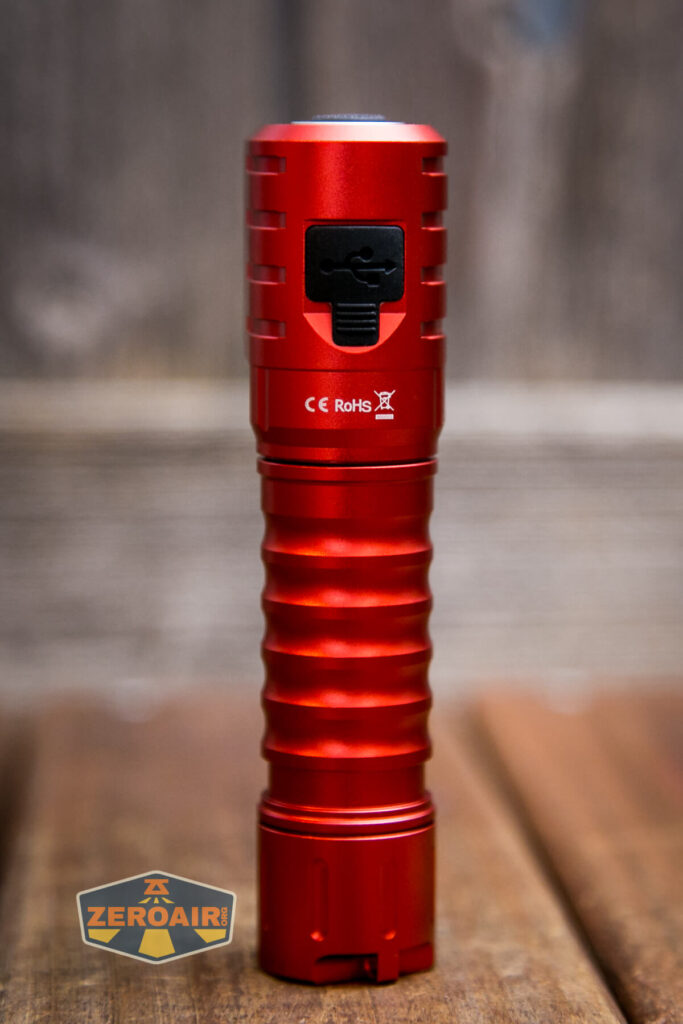















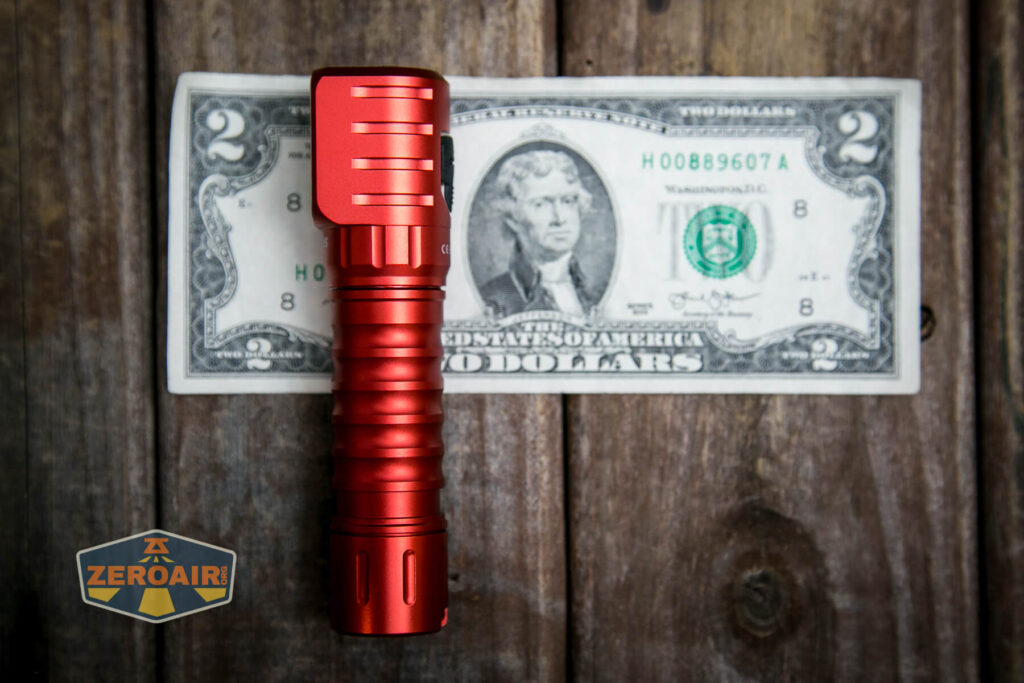




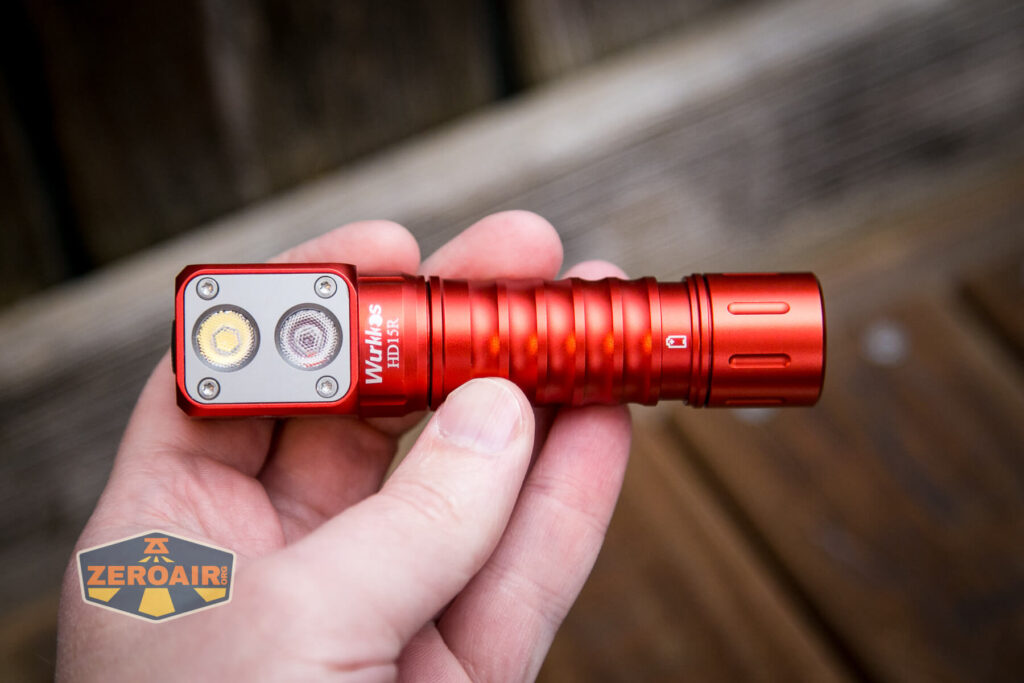













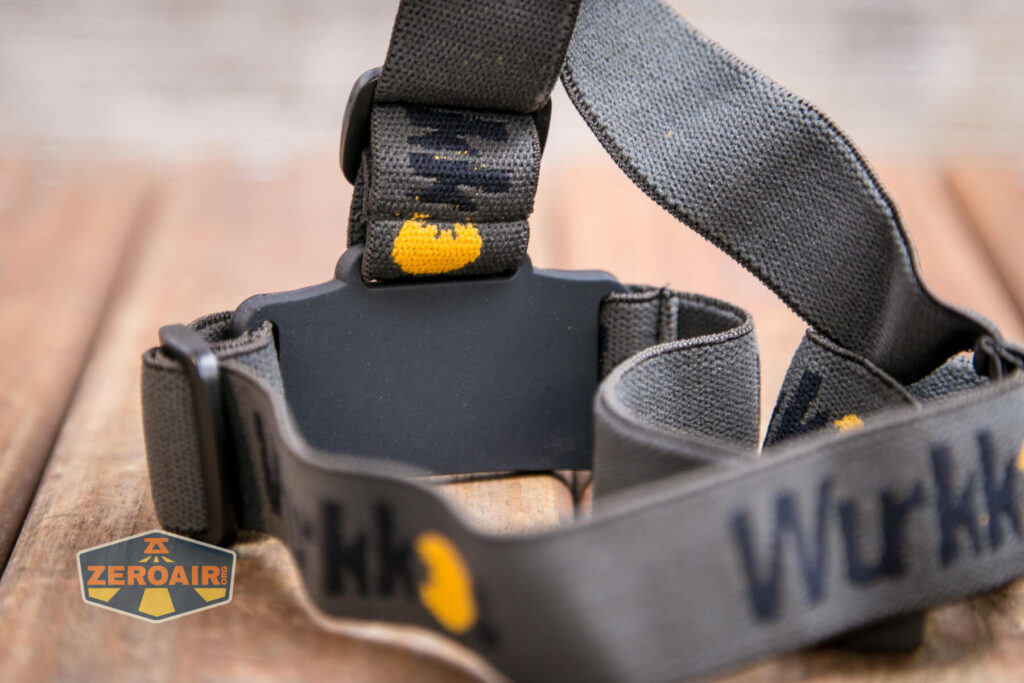








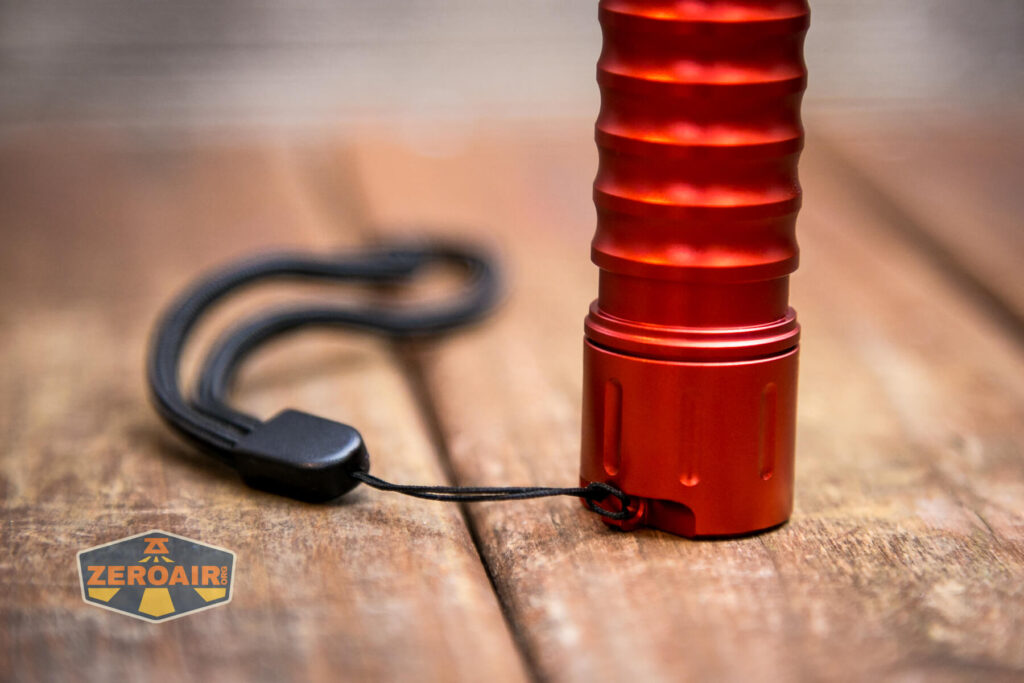


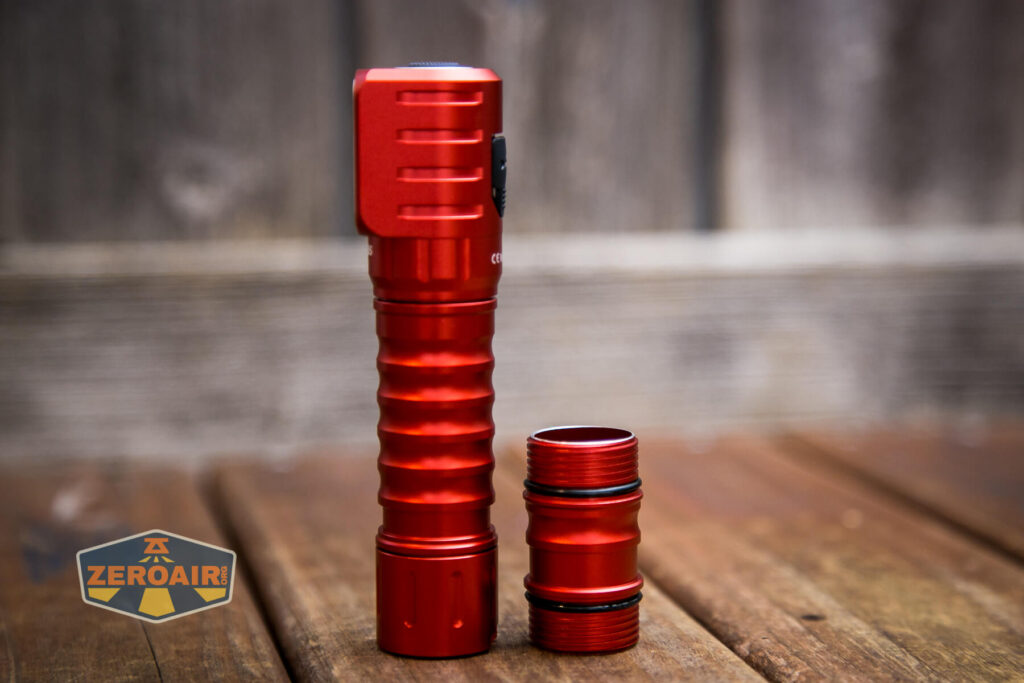

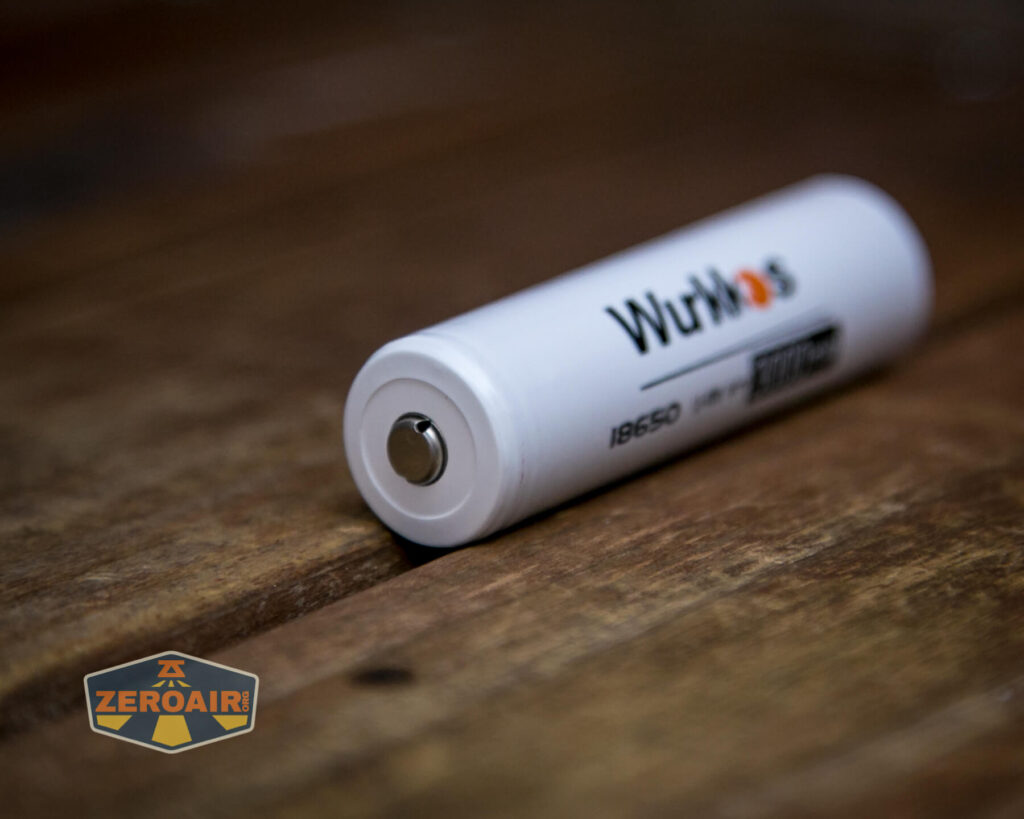
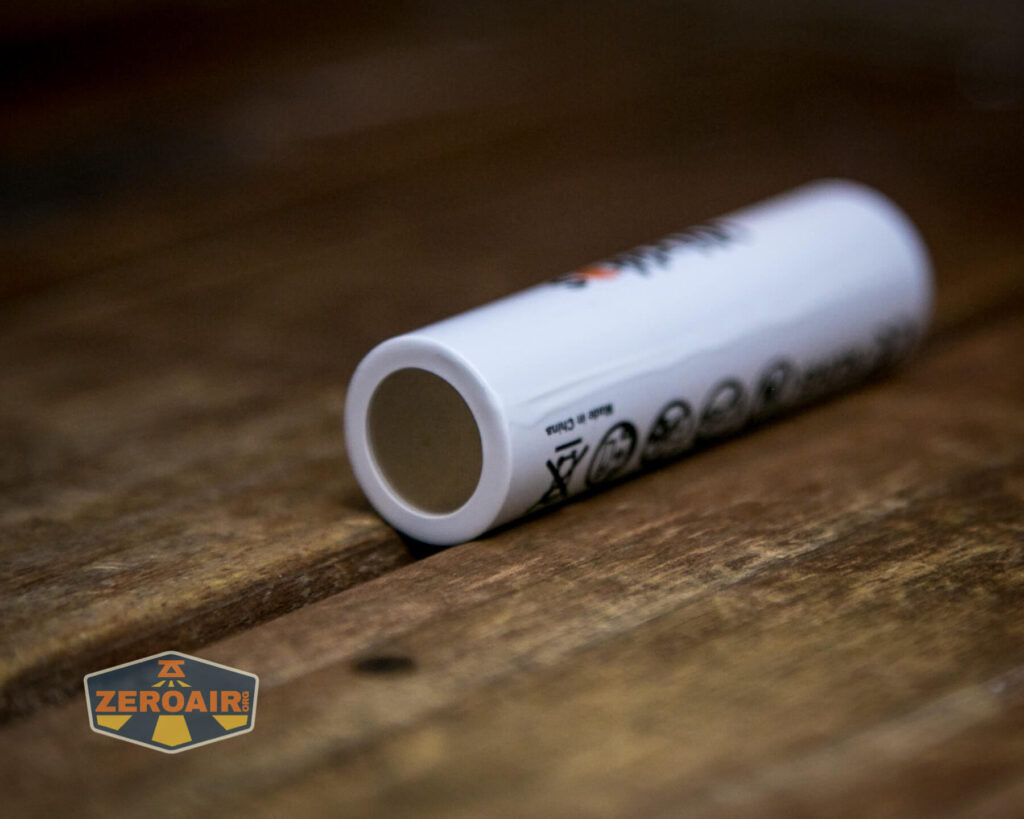




















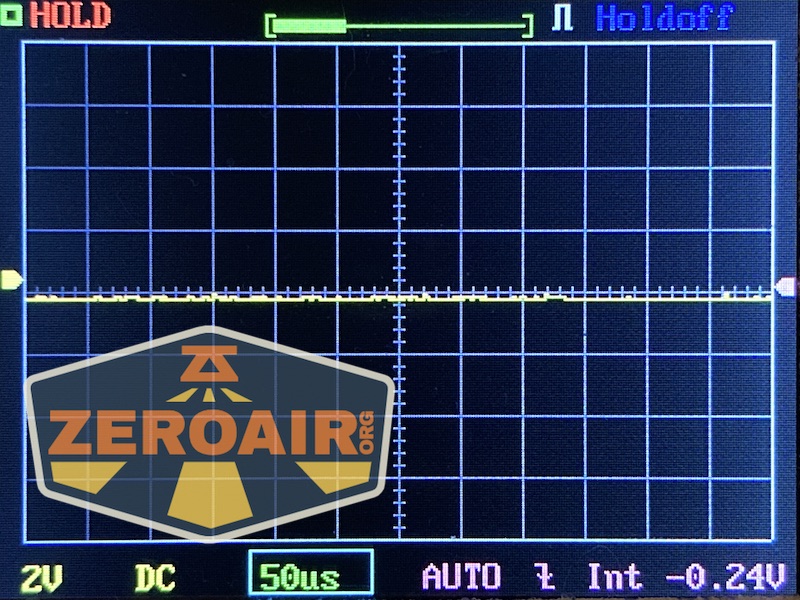


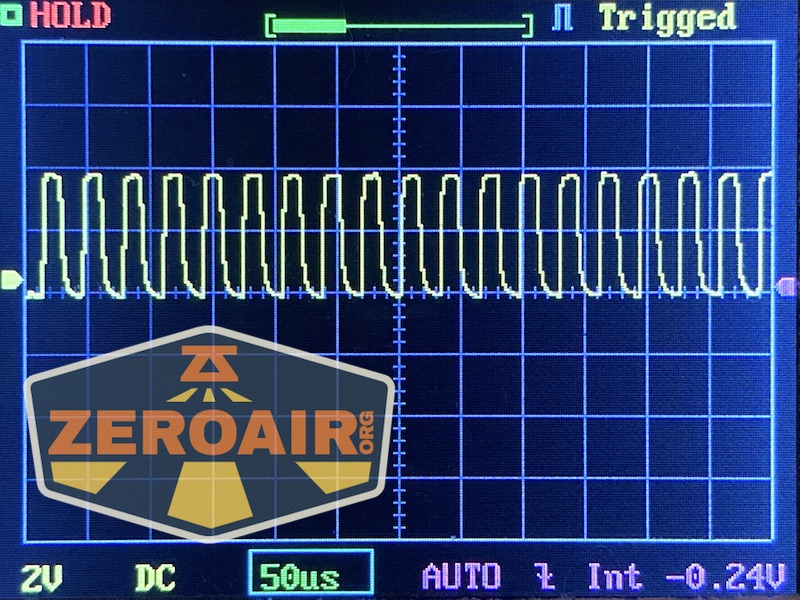

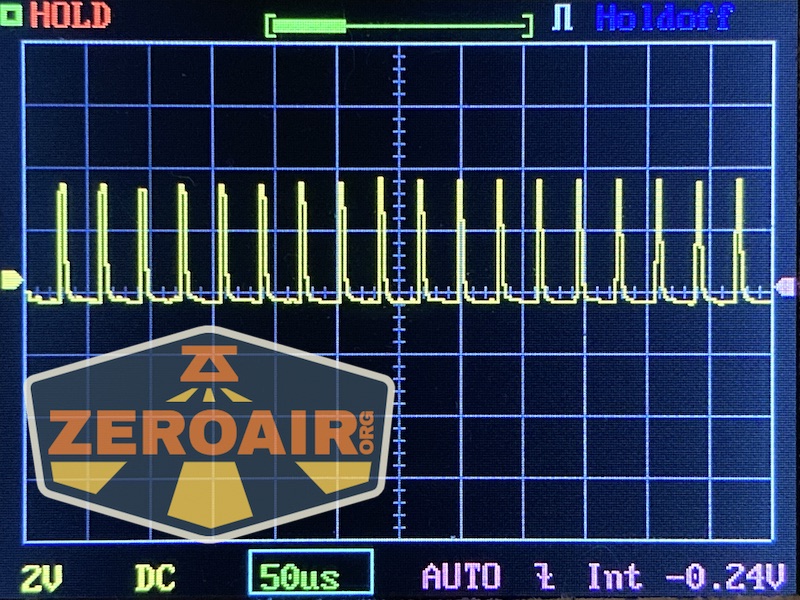




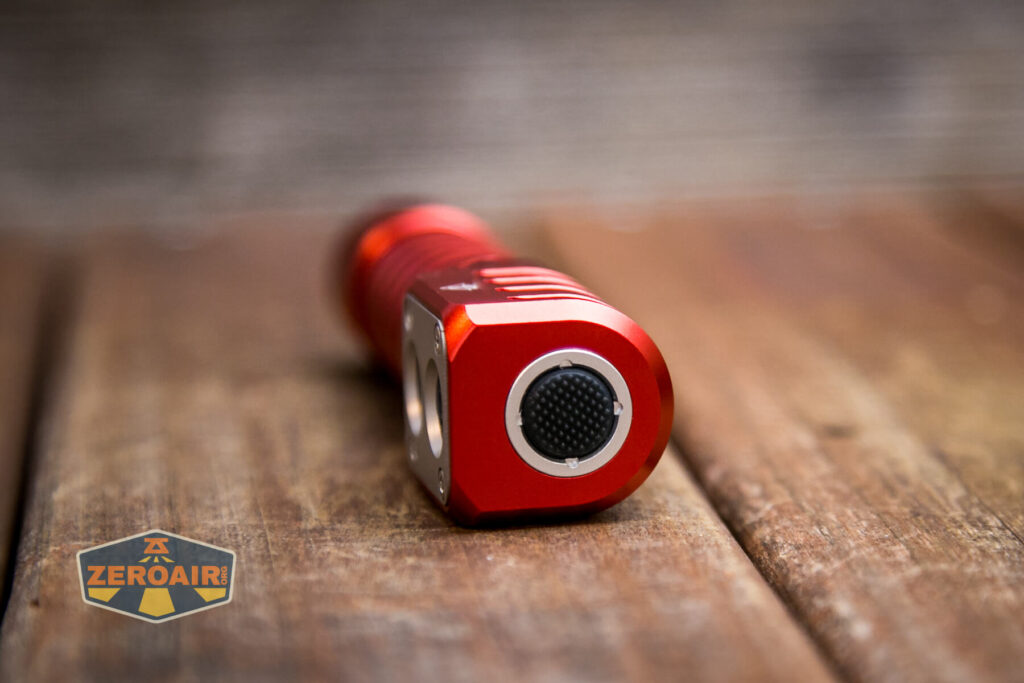
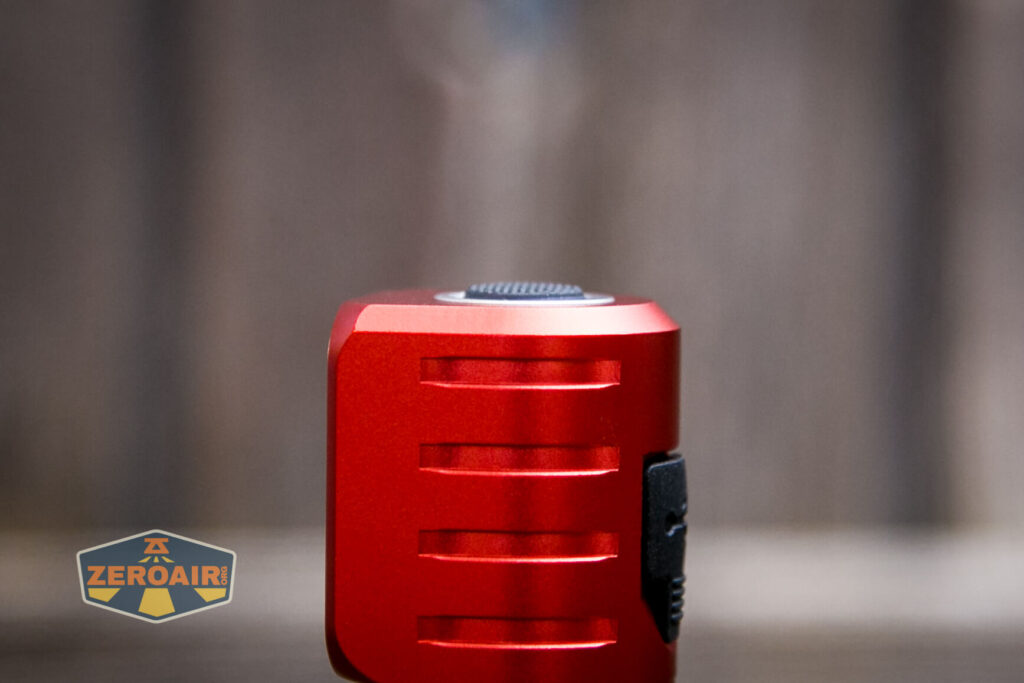








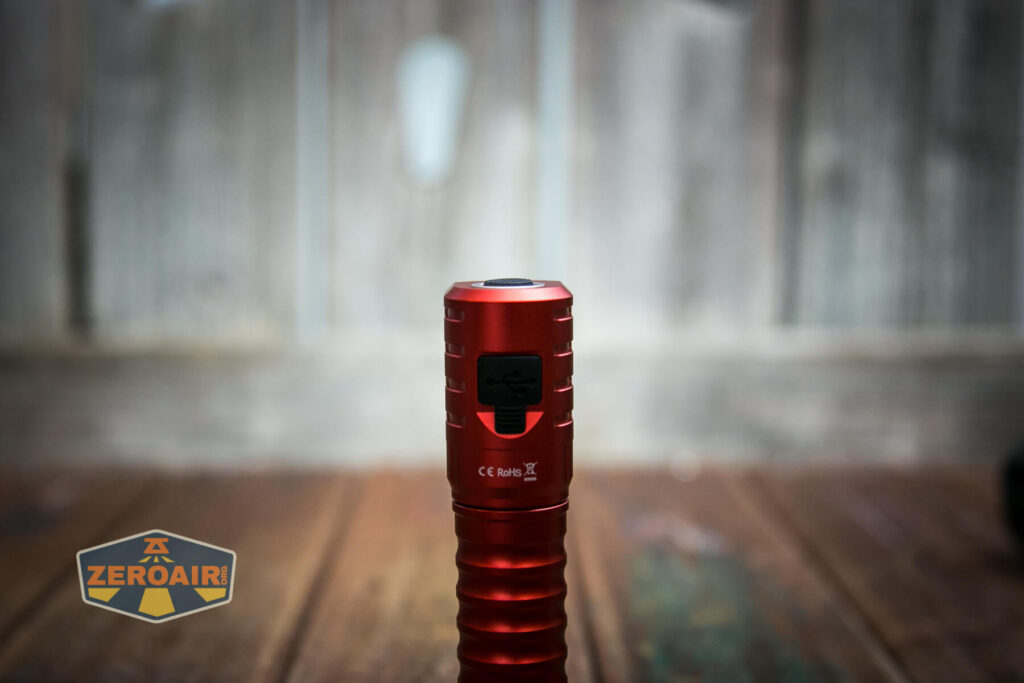







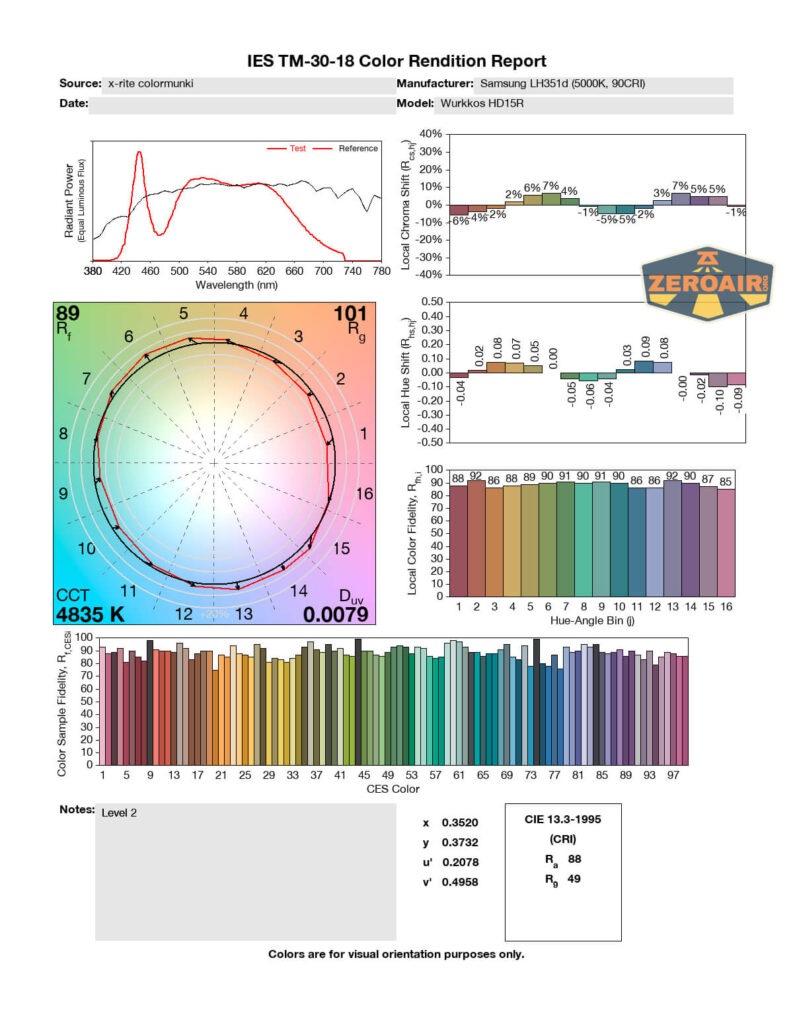





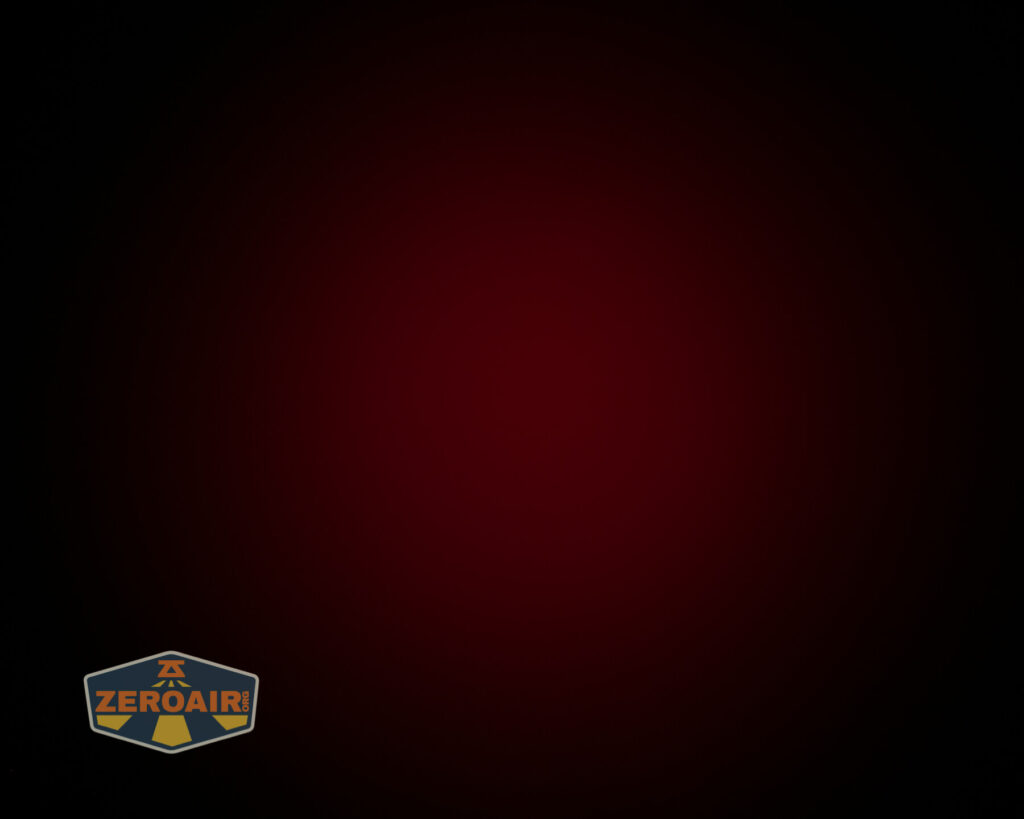



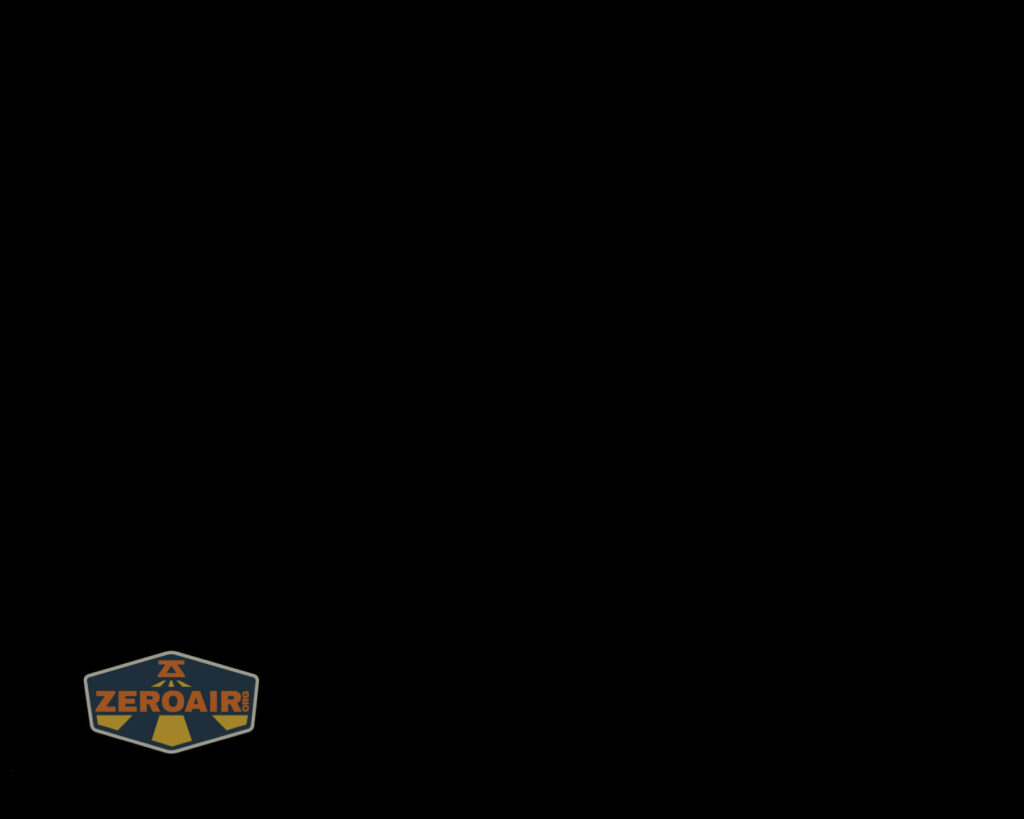








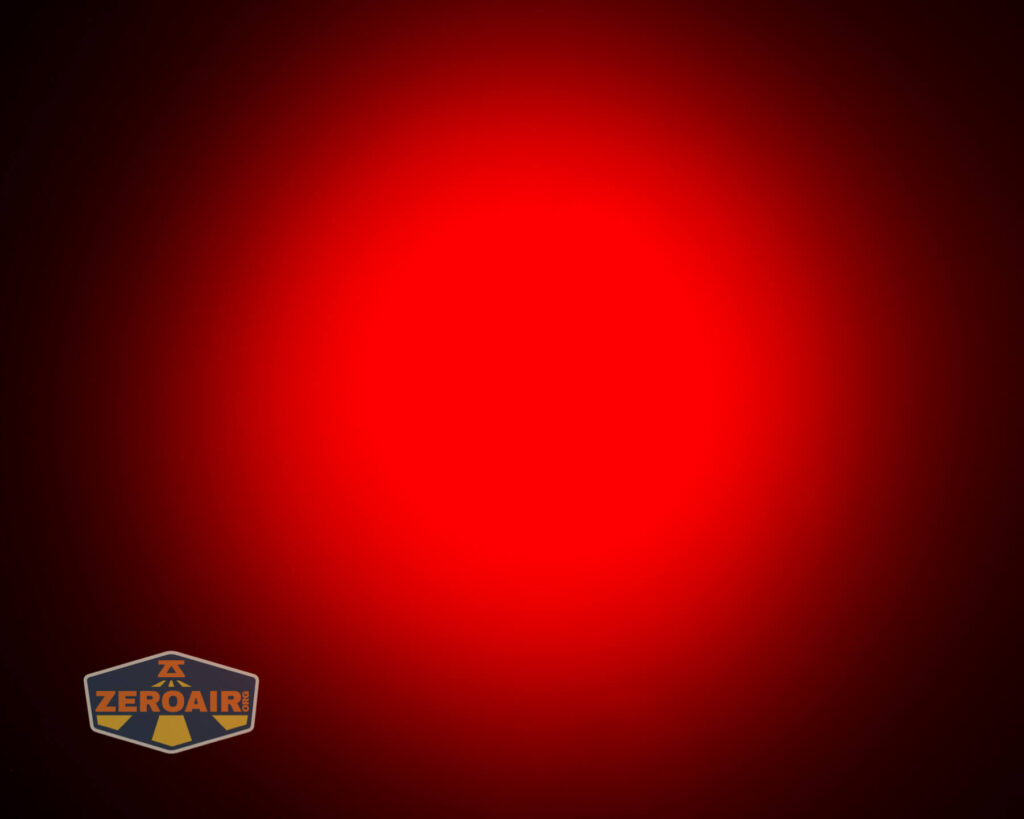
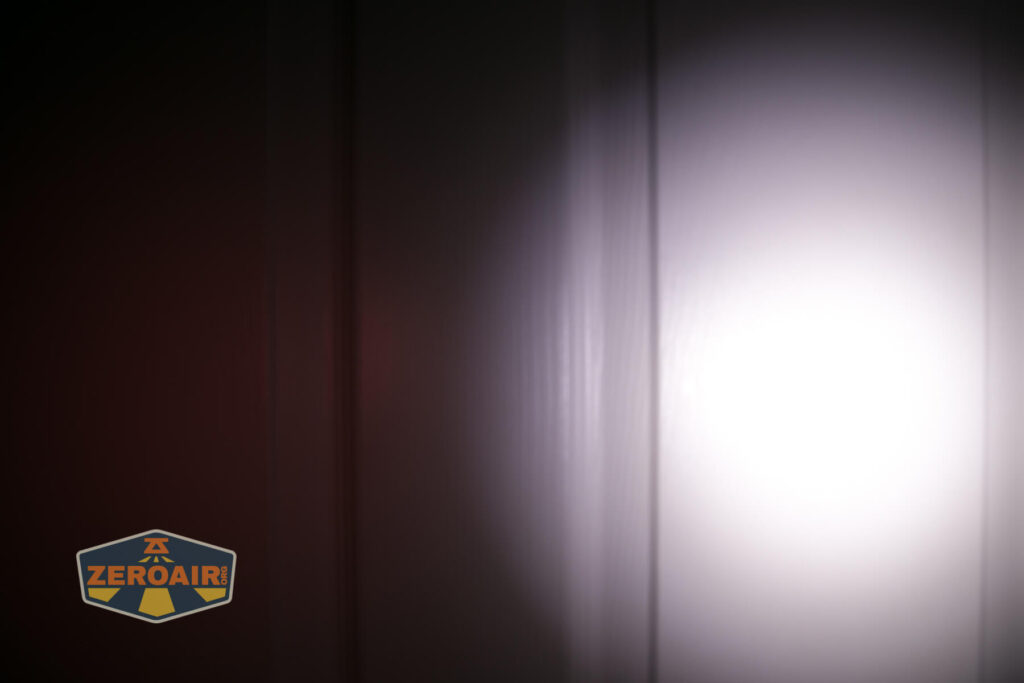














Nice review! They need to calm down a bit with that thermal regulation, though.
What’s your room temperature? Currently reviewing mine with a fan on full speed and I’m not seeing the same fluctuation on Turbo. Room temp is 21°C
Room temperature is normal – between maybe 15°C and 24°C.
Toggling back and forth between this review and that of the HD15, it appears that the ANSI chart for the HD15R incorrectly lists the throw numbers of the SST20, not the throw numbers of the LH351D. That is why it appears to come up short in percent of claim.
I have bought exactly the same HD15R. Your review is nice and complete: I have a question about powerbank mode . I cannot reach 2A for output. I reach max 0,5A and charging other devices is very slow (I tryed several wires and devices to charge) How do you reach 2A ? Best regards,
Really I reached 2A only through testing. I have a little electronic load that I test with. It could be that the device you’re using only wants to pull 0.5A or just negotiates to 0.5A or something.